The iPhone 13 Pro Max is Apple’s 2021 top-of-the-line smartphone, powered by the A15 Bionic chipset and offering up to 1TB of internal storage. On the audio playback front, Apple partnered with Dolby Labs to deliver an immersive stereo reproduction. As for recording, the audio zoom algorithm is still implemented when filming videos.
To check on all this — and much more — we put Apple’s latest “Oh. So. Pro.” model through our rigorous DXOMARK Audio test suite to measure its performance both at recording sound using its built-in microphones, and at playing audio back through its speakers. In this review, we will break down how it fared in a variety of tests and several common use cases.
Key audio specifications include:
- Two speakers (up front-firing, and bottom side-firing)
- Audio zoom
- Dolby Atmos
- Voice Isolation and Wide Spectrum microphone modes (for calls)
- User‑configurable maximum volume limit
About DXOMARK Audio tests: For scoring and analysis in our smartphone audio reviews, DXOMARK engineers perform a variety of objective tests and undertake more than 20 hours of perceptual evaluation under controlled lab conditions. This article highlights the most important results of our testing. Note that we evaluate both Playback and Recording using only the device’s built-in hardware and default apps.
(For more details about our Playback protocol,
click here; for more details about our Recording protocol, click here.)
Test summary
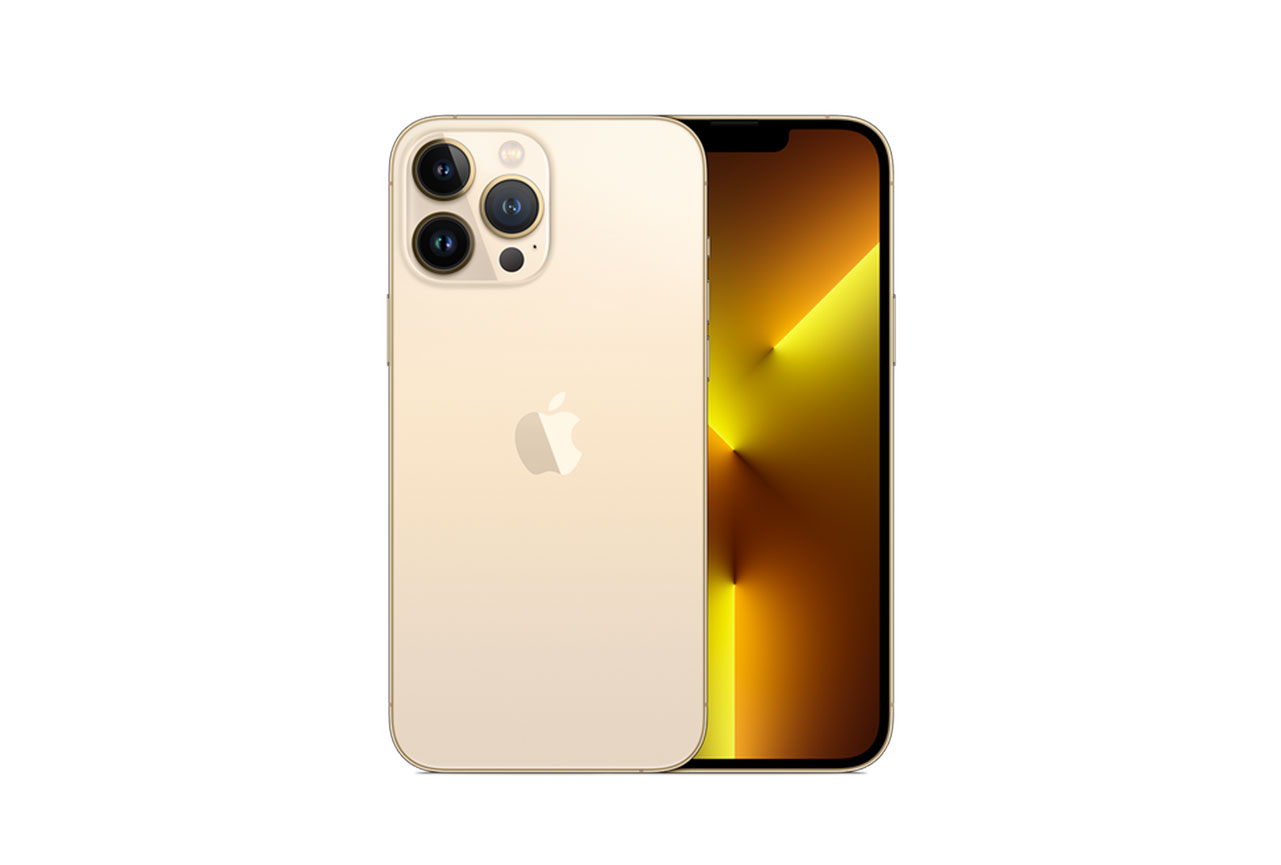
Apple iPhone 13 Pro Max


 10th
10th 4th
4thPlayback
Pros
- Very consistent performances among all attributes
- Pleasant tonal balance, with added low mid warmth compared to previous iPhone generations
- Precise localizability and very good wideness despite stereo being inverted
Cons
- Stereo is still inverted in the Music app, as it is with all iPhones
- Bass distortion at maximum volume
Recording
Cons
- Dark Timbre, lacking brightness and clarity
- Below average SNR and intelligibility
- Impaired distance rendition
Once again, Apple’s flagship smartphone performs above its predecessor, the iPhone 12 Pro Max, achieving a DXOMARK Audio score of 75, which places it one point higher than the iPhone 12 Pro Max, and only 6 points below our top-scoring device thus far, the Black Shark 4 Pro.
The 13 Pro Max speakers are extremely well suited for playing games and watching movies, thanks to excellent spatial results in all attributes (wideness, localizability, balance and distance rendering), a volume-consistent tonal balance with precise high-ends and a rich, full midrange, impactful and sharp dynamics overall, and a skillful management of sonic artifacts. The volume performance is also helpful, with a minimum volume leaving games and movies fully intelligible, a distribution from softest to loudest steps allowing the user to finely adjust the listening volume, and a satisfying maximum volume. Further, the speakers are nearly impossible to occlude during a gaming session.
The phone’s low-end extension, albeit very good, isn’t up to par with our top-scoring phones, and as with all iPhone models, when using the music app, the left and right channels are inverted by default.
As a recording device, the iPhone 13 Pro Max produces a somewhat darker timbre than the previous generations, due to a limited high-end extension and an overall lack of brightness. However, timbre remains natural, warm, and fairly consistent despite volume variations. While recording in loud environments is a commonly shared iPhone ability, the 13 Pro Max continues the tradition set by its predecessors by providing clear, precise, and rich midrange, powerful bass, a precise capture of the sound envelope, and overall an excellent resilience to high-pressure levels. Further, it offers a very interesting DSP compensation for the partial occlusion of microphones (when the phone is held with only one hand, for example). Selfie videos also fared very well in our protocol, with well-balanced midrange, and impressive wideness considering the fact that this use case is evaluated in portrait mode.
As good as it’s getting, the iPhone 13 Pro Max still has a little margin for improvement in the recording area. Its main limitation is a lack of treble information and high-end extension which, besides inducing a darker sonority, makes voices less intelligible by preventing them from rising above background noise in louder environments, thus altering the signal-to-noise ratio.
Sub-scores explained
The DXOMARK Audio overall score of 75 for the Apple iPhone 13 Pro Max is derived from its Playback and Recording scores and their respective sub-scores. In this section, we’ll take a closer look at these audio quality sub-scores and explain what they mean for the user.
Playback

Timbre
Apple iPhone 13 Pro Max
74
89
Timbre tests measure how well a phone reproduces sound across the audible tonal range and takes into account bass, midrange, treble, tonal balance, and volume dependency.
The iPhone 13 Pro Max’s frequency response is in many ways similar to its predecessor’s in that it offers precise treble, significant high-end extension, powerful bass without being boomy, and satisfying low-end extension — albeit soundly defeated by other top-scoring devices from our Audio rankings.
The main difference lies in the midrange frequencies: much fuller- and richer-sounding, the mids convey more roundness, and sound less nasal. These characteristics are considerably beneficial to the user experience in both movie and music playback. The overall result is natural, bright yet warm, from softest to loudest volumes.
You can hear that difference in the midrange (among others) in the comparison video below:

Dynamics
Apple iPhone 13 Pro Max
74
81
DXOMARK’s dynamics tests measure how well a device reproduces the energy level of a sound source, and how precisely it reproduces bass frequencies.
Dynamic attributes, on their part, are strictly identical to the previous generation’s. The 13 Pro Max delivers good attack at soft and nominal volumes, and punch is even impactful at softer volumes thanks to the appreciably deep low-end extension. Bass precision is very good overall, albeit impaired by resonances and distortion at both nominal and maximum volumes. In this area, too, changes in volume have little impact over the consistency of the performance.

Spatial
Apple iPhone 13 Pro Max
74
88
The sub-attributes for perceptual spatial tests include localizability, balance, distance, and wideness.
Spatial performance is certainly the most notable evolution in respect to the previous generation. Localizability is very precise, wideness is outstanding, balance between the left and right channels is well centered, and distance rendering is very realistic for voices.
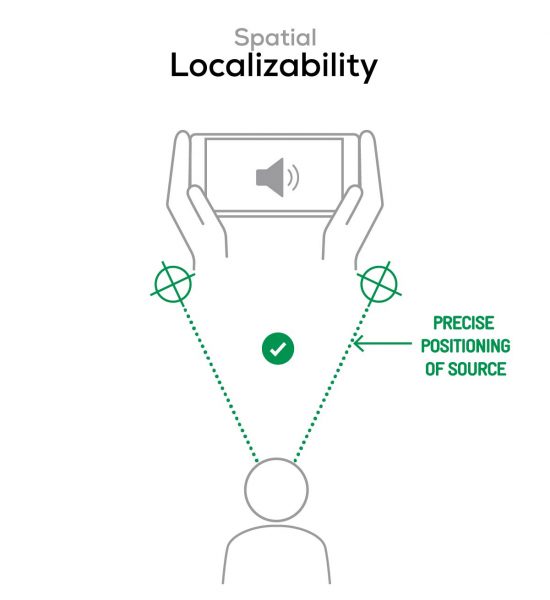
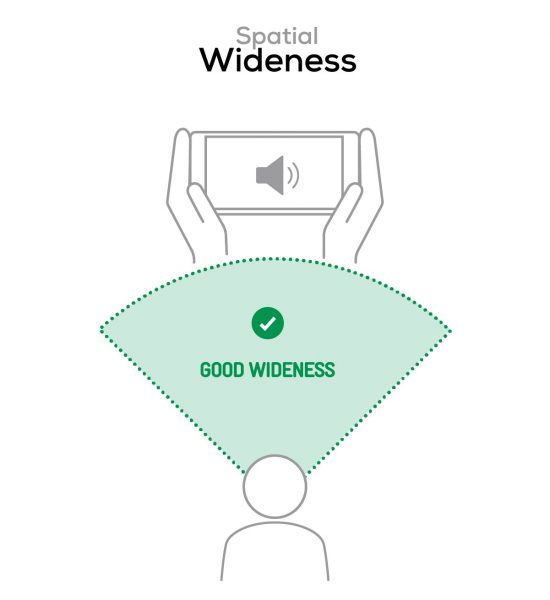
As with every other iPhone model, the stereo field is inverted when using the Music app. When using the phone in landscape mode (top of the phone is on the left), the left channel sound comes from the right side of the device, and vice versa. Because the stereo does not rotate automatically in the music player, the user has to turn the phone to an inverted landscape position (with the top of the phone on the right) in order to obtain the correct stereo orientation. But despite the inverted stereo, wideness and localizability remain excellent.

Volume
Apple iPhone 13 Pro Max
73
91
Volume tests measure both the overall loudness a device is able to reproduce and how smoothly volume increases and decreases based on user input.
Because of a richer and fuller frequency response, at maximum volume, the iPhone 13 Pro Max sounds perceptually louder than its predecessor. Speaking of loudness, here are a few sound pressure levels (SPL) measured when playing our sample recordings of hip-hop and classical music at maximum volume:
| Hip-Hop | Classical | |
| Apple iPhone 13 Pro Max | 72.5 dBA | 69.5 dBA |
| Apple iPhone 12 Pro Max | 72.5 dBA | 70.3 dBA |
| Samsung Galaxy S21 Ultra 5G (Exynos) | 73.2 dBA | 71 dBA |
Minimum volume remains well-tuned, allowing dynamic audio (such as classical music or movies) to remain fully intelligible. Further, as shown in the following graph, the volume steps distribution from softest to loudest is extremely consistent:

Artifacts
Apple iPhone 13 Pro Max
84
113
Artifacts tests measure how much source audio is distorted when played back through a device’s speakers. Distortion can occur both because of sound processing in the device and because of the quality of the speakers.
As in the Dynamics category, through an artifacts reading grid, the iPhone 13 Pro Max performs exactly the same as its precursor. It is quite capable of keeping undesirable sounds to a minimum, since very few artifacts are perceivable overall. All use cases fare very well, with gaming at the top of the scale.
That said, bass distortion can be perceived on specific sounds at nominal and maximum volumes. On the plus side, the noise floor is a bit lower than the iPhone 12 Pro Max’s, and the speakers are hard to occlude while gaming!
Recording

Timbre
Apple iPhone 13 Pro Max
79
91
As a recording device, the 13 Pro Max delivers a very good timbre performance. The rendition is natural, warm, and rather consistent, with an emphasis on the lower midrange.
Unlike in playback, recordings have a darker sonority due to a receding high-end extension and limited treble. As a result, brightness is dimmed, and vocal intelligibility is altered. In noisy surroundings, such as our urban scenario, conversations have a hard time standing out of the background noise. This problem is less noticeable in high-SPL scenarios, in which the phone demonstrates clear, precise, rich and consistent midrange, a better high-end extension, and powerful bass — without ever sounding boomy.
In life videos, memos and meeting scenarios, the phone’s frequency response generates a slightly muffled sonority with subtle resonances in the lower midrange. That said, the overall result remains natural and pleasing.

Dynamics
Apple iPhone 13 Pro Max
64
81
Although the iPhone 13 Pro Max seems perfectly capable of delivering an excellent dynamics performance, with its large dynamic range and reliable reactiveness, results were hindered by various factors.
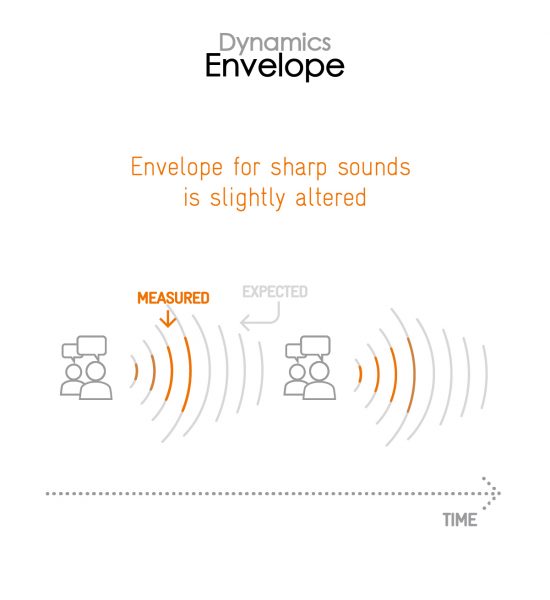
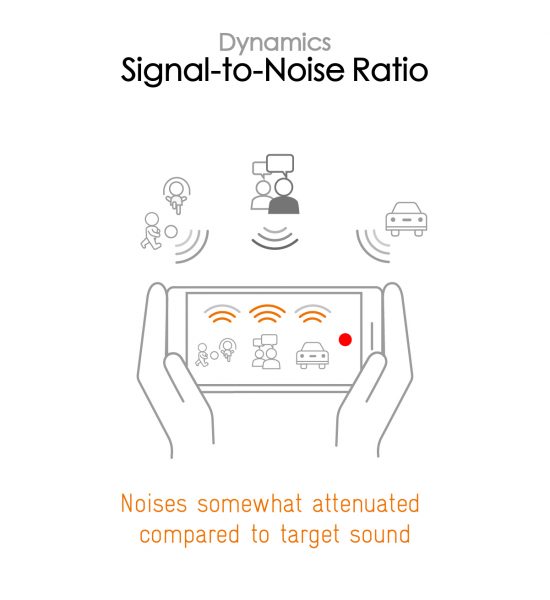
While the envelope rendition is accurate in most use cases — and especially precise in our electronic concert scenario despite very elevated sound pressure levels, attack could be sharper and snappier. In loud environments (such as a concert) the combination of dulled transients, dynamic compression and powerful bass becomes detrimental to the sound envelope as well as the punch. The aforementioned limited high-end extension is also problematic in this category: it reduces the intelligibility of vocal content, which impacts the signal-to-noise ratio sub-score.

Spatial
Apple iPhone 13 Pro Max
56
78
The iPhone 13 Pro Max turns in a good spatial performance in the recording domain. Wideness is very good across all use cases — and yes, this includes selfie videos, which exhibit impressive wideness despite their vertical orientation.
The impressive wideness performance in videos, however, does not occur in the recordings from the Voice Memos app. Voice memos and meeting recordings are all in mono and lack wideness.
As for the other spatial attributes, the timbre’s lack of clarity impacts both distance perception and localizability, which otherwise are respectively correct, and very good.

Volume
Apple iPhone 13 Pro Max
75
99
As always with the iPhones, volume in recorded audio is a very strong point. Voices benefit from very good loudness, and the maximum level reachable without a perceivable amount of distortion is excellent. In other words, the phone demonstrates an excellent resilience to very loud surroundings.
The loudness in the recorded files is acceptable but a bit below the best phones for recording, which results in recorded video files that have a decent albeit not optimal volume. Here are our test results, measured in LUFS (Loudness Unit Full Scale); as a reference, we expect loudness levels to be above -24 LUFS for recorded content:
| Meeting | Life Video | Selfie Video | Memo | |
| Apple iPhone 13 Pro Max | -25.5 LUFS | -22.7 LUFS | -20.2 LUFS | -18.2 LUFS |
| Apple iPhone 12 Pro Max | -23.7 LUFS | -22.4 LUFS | -19.7 LUFS | -18.8 LUFS |
| Samsung Galaxy S21 Ultra 5G (Exynos) | -26.8 LUFS | -20.1 LUFS | -22.5 LUFS | -22.3 LUFS |

Artifacts
Apple iPhone 13 Pro Max
79
97
As we were saying, the 13th Pro Max generation is even more skilled than the previous one when it comes to handling loud environment recordings: very few artifacts were spotted by our sound engineers, even in high-SPL scenarios. Occasional pumping and slight distortion were exclusively noticeable in selfie videos, triggered by shouting voices. You can check for artifacts yourself in this sample recording:
The iPhone 13 Pro Max presents a very interesting and well implemented feature: when the phone is held with one hand only, the DSP successfully compensates the partial occlusion induced. Further, when it is held with both hands, voices remain perfectly intelligible, only mildly indisposed by a slight loss in the spectrum’s extremes.

Background
Apple iPhone 13 Pro Max
51
60
The iPhone 13 Pro Max produces above-average background recordings, with its sub-score only 7 points below the title holder’s in this category, which is none other than the iPhone XS Max. Backgrounds manage to sound very natural despite the darker sonority, and seem unmoved by loud events captured in the foreground.
Conclusion
Each year, point by point, the Pro Max series improves its audio performance. In playback, the latest generation demonstrates a true skill for gaming and watching movies thanks to a rich and harmonious tonal balance, sharp dynamics, and impressive spatial attributes. It is also a very good companion for listening to a podcast or watching a movie before falling asleep, with its very well-tuned minimum volume. And as a recording device, the 13 Pro Max even outshines its predecessor(s) when recording in loud environments — which can prove pleasant at a time when concerts are coming back to town — and provides excellent audio quality to selfie videos.


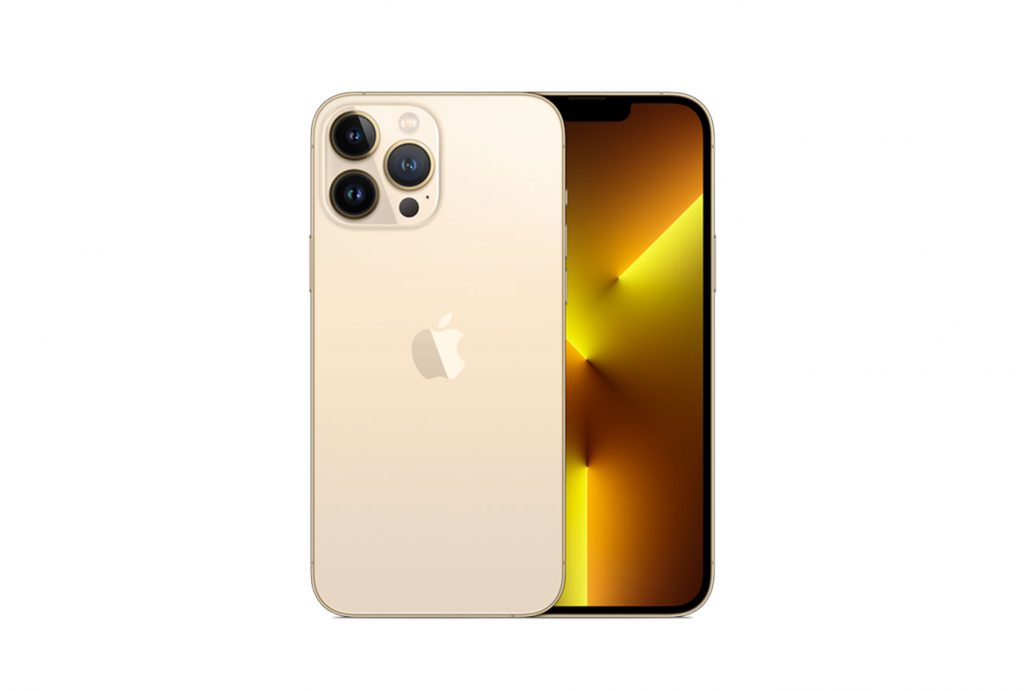

DXOMARK encourages its readers to share comments on the articles. To read or post comments, Disqus cookies are required. Change your Cookies Preferences and read more about our Comment Policy.